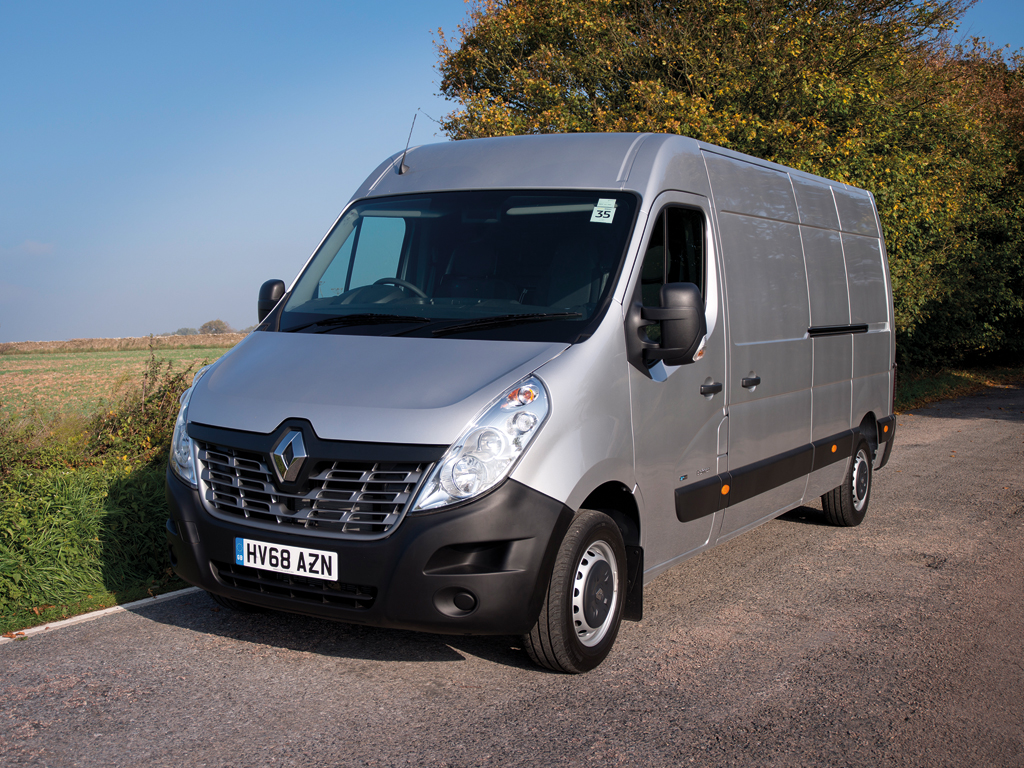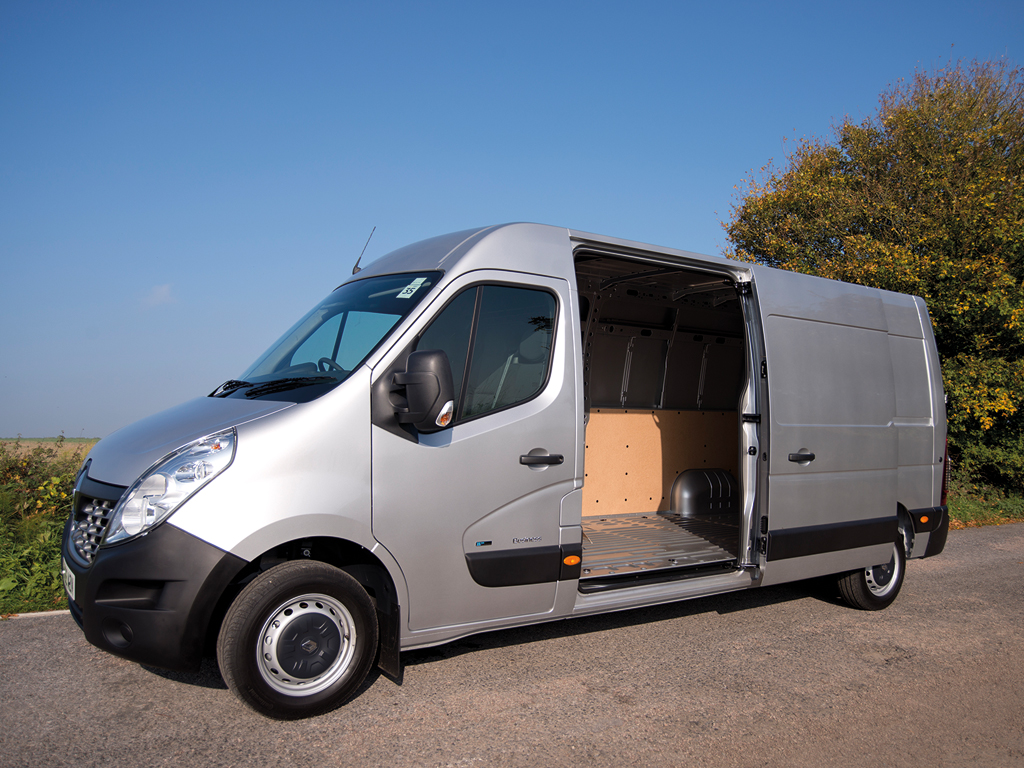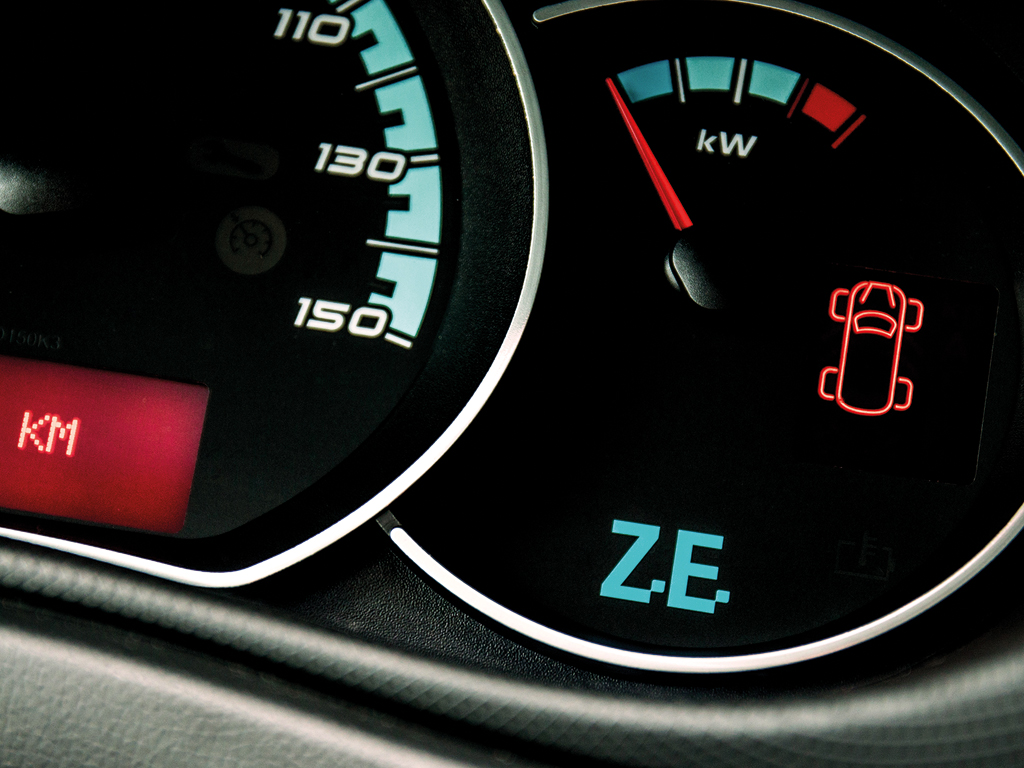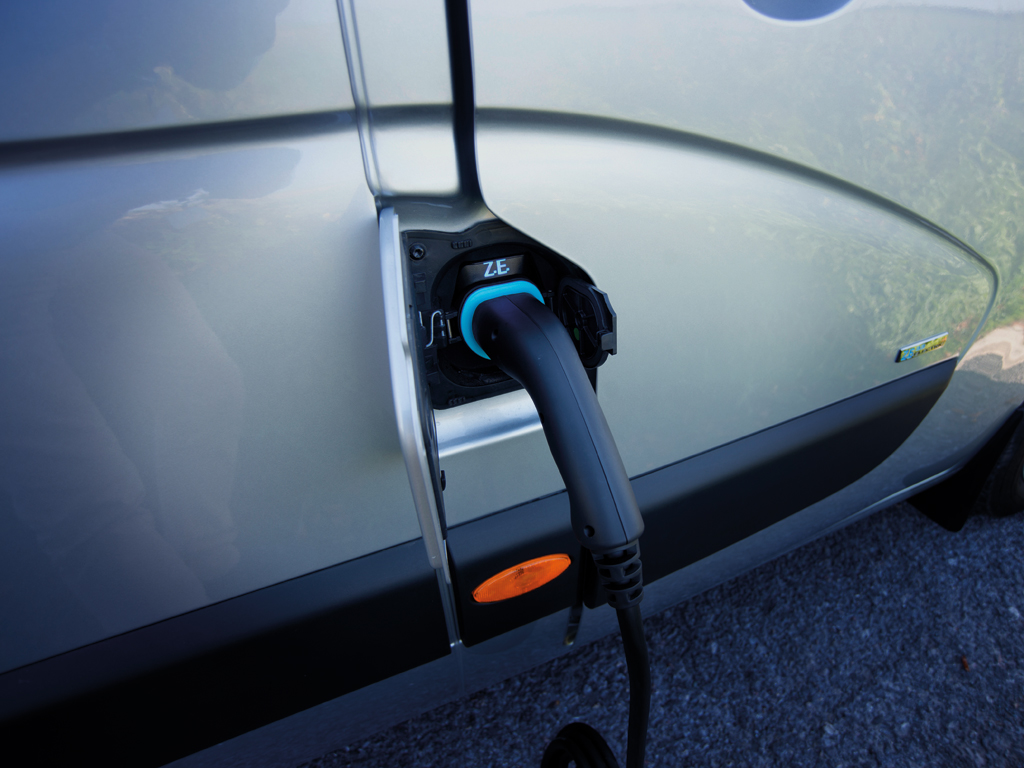Renault’s Master Z.E. electric van offers a healthy payload within a 3.1-tonne gross weight, says Dan Gilkes.
Unlike many of its competitors, Renault has opted not to push its heaviest van up to 4.2-tonnes to accommodate the batteries for an electric driveline. Instead, the company has chosen to use lighter, more compact driveline components to achieve the desired payload within a lower overall gross weight.
The Master Z.E. is equipped with the same 33kWh lithium-ion batteries as the smaller Kangoo Z.E.33, mated with the firm’s more powerful R75 electric motor from the Zoe car. This delivers 76bhp and 225Nm of torque, with a maximum speed set at 62mph.
The van has an NEDC range of 124 miles, though Renault admits a more realistic 75-80 miles should be possible on a single charge, which should be more than enough for most urban delivery users. More importantly, the vans will still be able to carry around 1-tonne of payload.
Renault is offering the Master Z.E. in four panel van configurations, offering load volumes of 8-13m3. They go from a short-wheelbase, low-roof model, with a payload of 1,128kg, right up to a long wheelbase with medium roof. This larger model boasts a 975kg load-carrying ability. However, the long-wheelbase, medium-roof combination is the best-selling diesel Master and is expected to be the Z.E. model of choice for UK buyers too.
The Master Z.E. will also be offered in two platform cab variants, on the L2 and L3 chassis. These deliver over 1.35-tonnes of body and payload capability, suitable for conversions of up to 19m3 load volume. As the batteries sit below the cab, it is also possible to fit an ultra-low floor body to the front-wheel drive Z.E. chassis.
In the cab there is little to mark out the zero-emission driveline. The Master Z.E. uses an automatic transmission lever to select drive, neutral and reverse gears and the dash gauges are changed to show charge and regeneration status rather than fuel levels and rpm. Otherwise it’s standard Master fare, which is no bad thing.
Though limited to 62mph, the Master Z.E. is pretty nippy for a large van and will easily keep pace with the urban flow. Instant full torque delivery means that acceleration can be rapid when required, though the van is also happy to crawl along smoothly with stop/start traffic, with each application of the brakes returning a little bit of energy to the battery.
With a list price well under £50,000, after the Plug-in-Van Grant has been applied, the Master Z.E. has been positioned at the lower end of the price scale for a one-tonne carrying electric van. It’s still not cheap, but with no congestion charge to pay and the ability to deliver in just about any city centre that you care to imagine, this is the direction that many companies will be heading in.
As with all electric vans, the Master Z.E. has to balance cost, range, payload and load volume. Renault looks to have got that balance spot on.
Rating: ****





